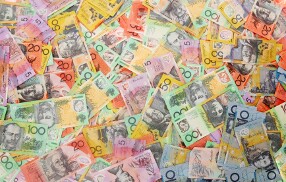The Australian dollar dipped intraday during the Wednesday’s trading session but has bounced against most of its rivals by now and is trading near the opening level. Today’s macroeconomic data released in Australia was mixed.
The Australian Bureau of Statistics reported that the Wage Price Index rose 0.6% in the June quarter from the previous three months on a seasonally adjusted basis. The actual increase was in line with market expectations and accelerated from the previous quarter’s 0.5% rate of increase.
The Westpac Melbourne Institute Index of Consumer Sentiment dropped 2.3% in August after climbing 3.9% in June. The report commented on the result:
The consumer mood deteriorated in August, giving back about half of the surprisingly strong gains seen in June and July. Those gains look to have been partly a positive response to the tax cuts announced in the May Budget, which passed into legislation in June, the first round of cuts coming into effect in July. The June-July gains also came against a backdrop of adverse developments on the global trade front and an emerging price correction in the Sydney and Melbourne housing markets.
The report also predicted that the Reserve Bank of Australia will not raise interest rates this year or the next:
Certainly it will be quite some time before the Bank has a case to adjust the cash rate. Westpac reaffirms its view that rates will remain on hold in both 2018 and 2019.
AUD/USD traded near the opening level of 0.7235 as of 17:10 GMT today after dipping to 0.7202 intraday — the lowest level since January 2017. EUR/AUD was also near its opening of 1.5666 following the rally to 1.5716. AUD/JPY dropped from 80.41 to 80.14, though rebounded from the daily low of 79.70 — the lowest since November 2016.
If you have any questions, comments or opinions regarding the Australian Dollar,
feel free to post them using the commentary form below.
